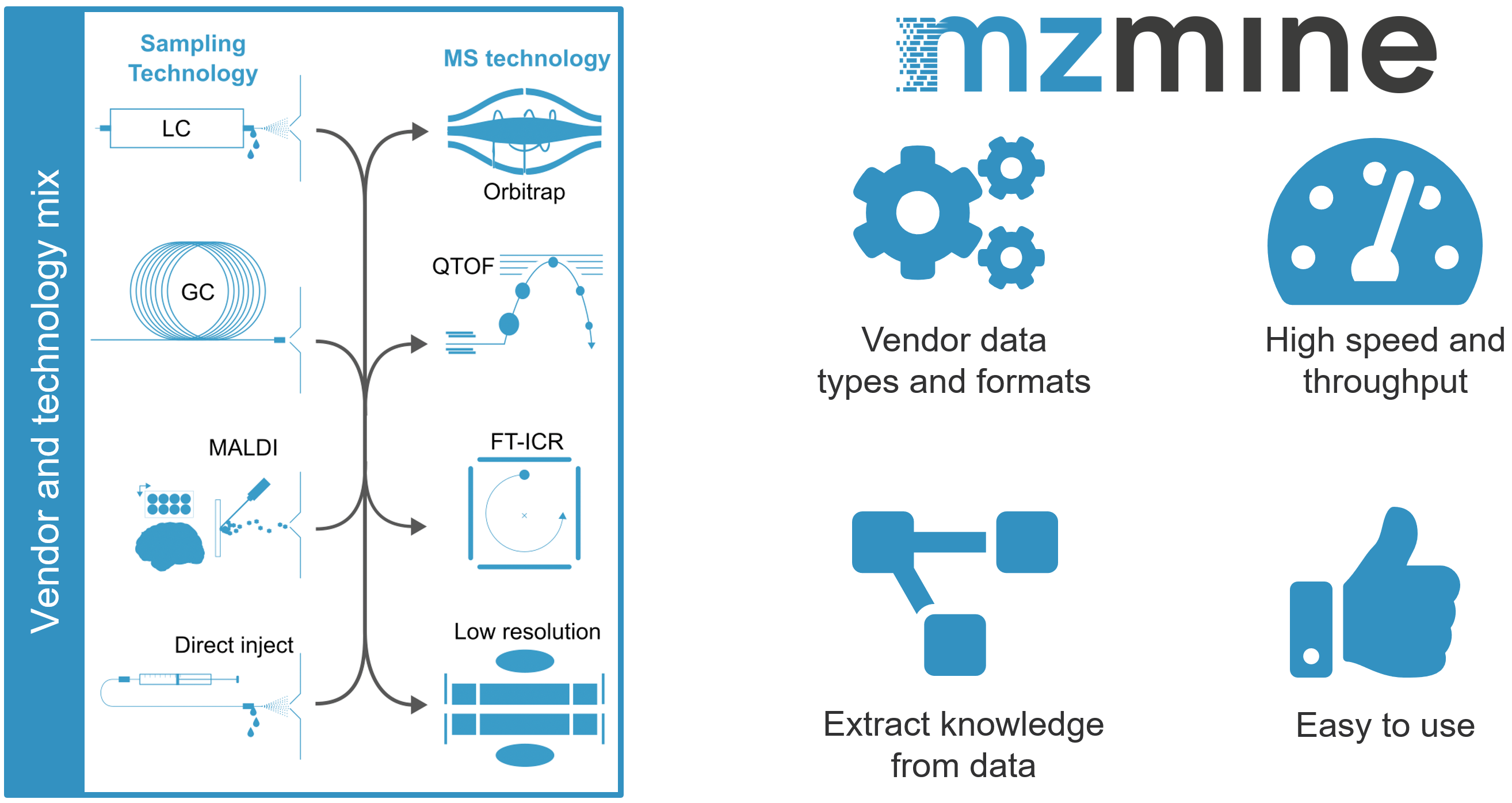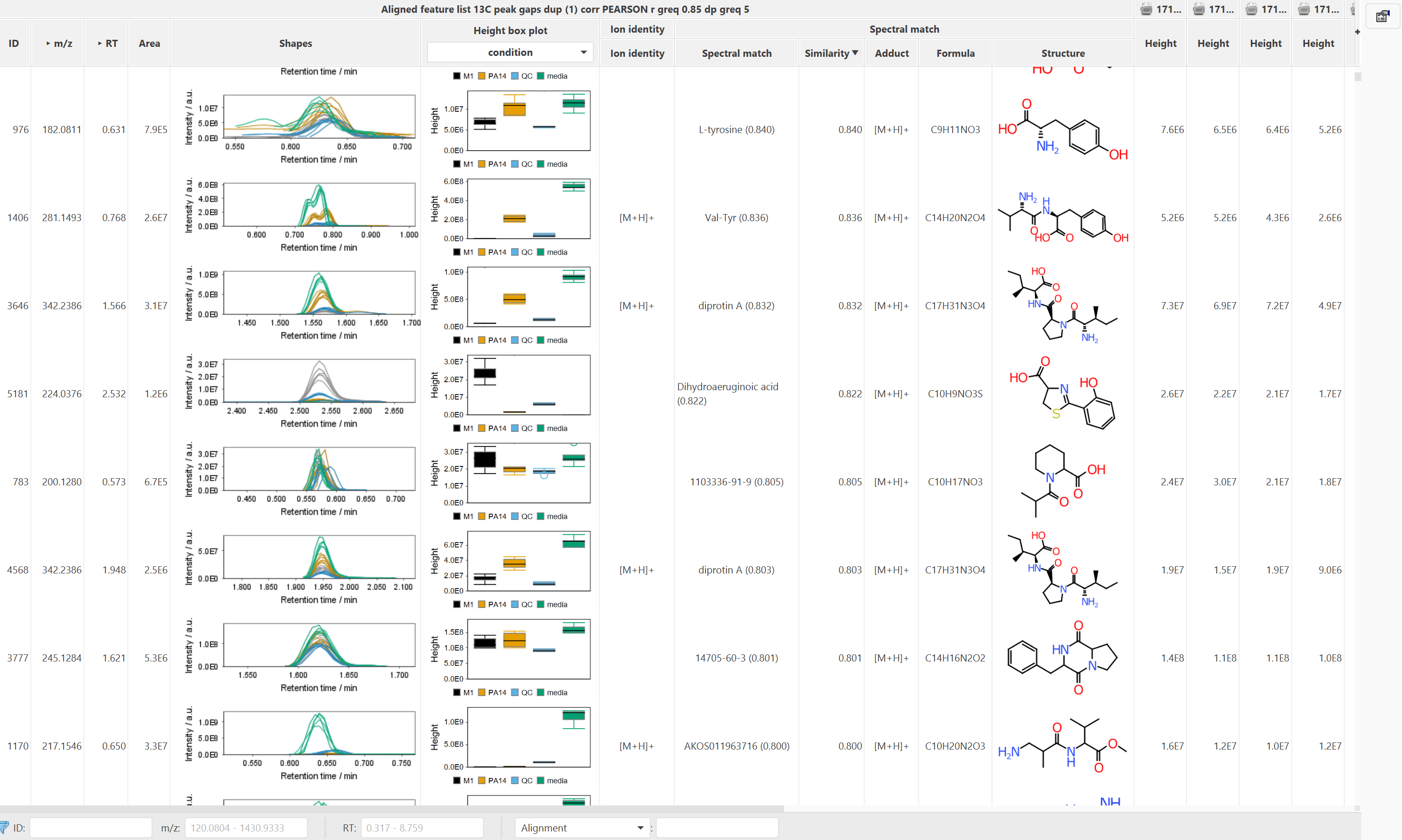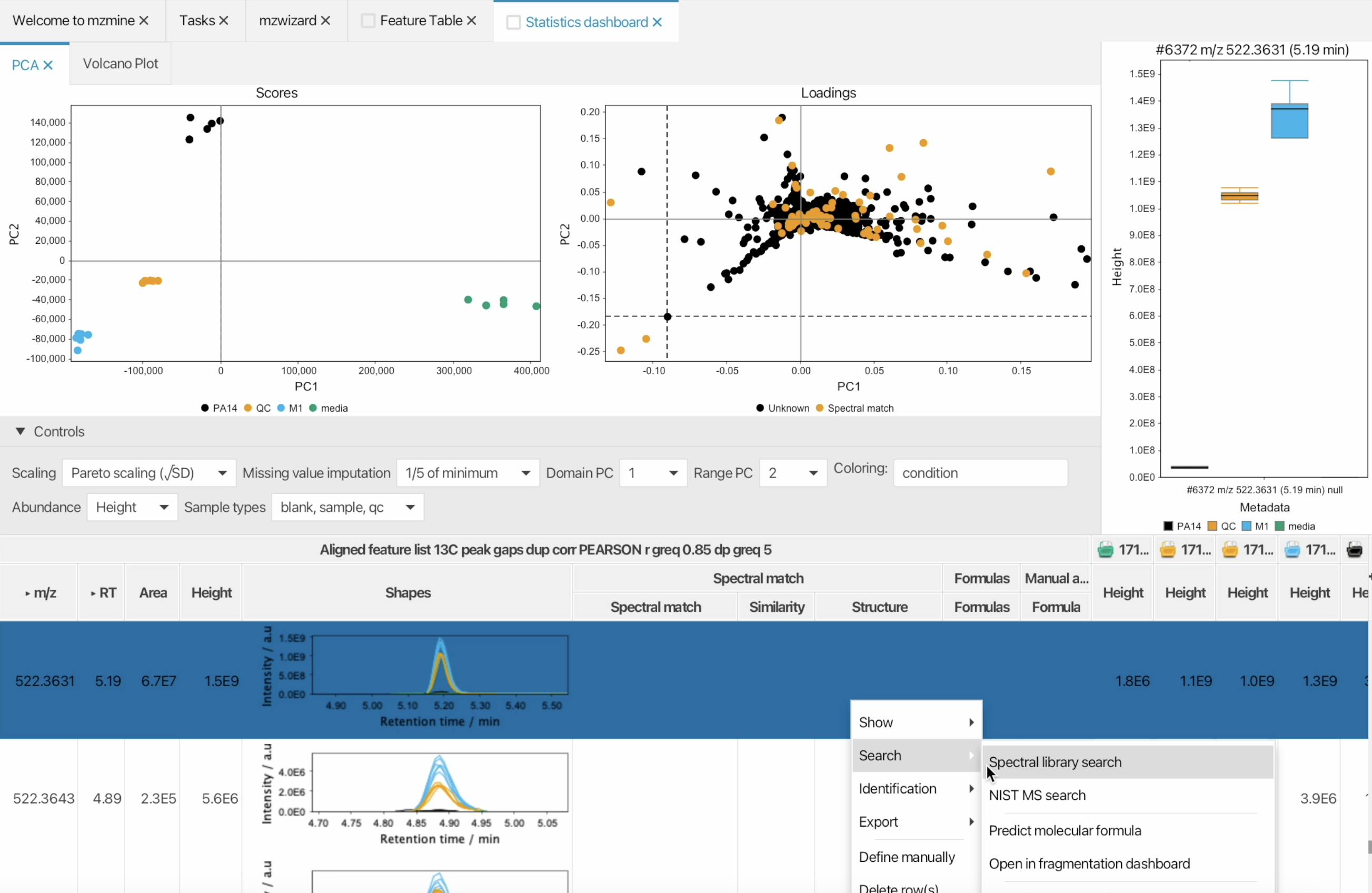Welcome to the mzmine documentation!¶
mzmine is an open-source and platform-independent software for mass spectrometry (MS) data processing and visualization. The workflow is optimized to allow processing of large-scale mass spectrometry studies. mzmine supports multiple raw data formats, including open formats such as mzML and several vendor-specific file types. Data from various instrumental setups, such as LC-MS, LC-IMS-MS, GC-MS, and even MALDI-(IMS-)-MS is supported. Interactive visualization tools allow you to seamlessly survey both raw data and processed results. mzmine allows you to transform your spectral raw data into meaningful feature lists and offers compound annotation approaches by spectral library matching, exact mass searches, rule based lipid annotation, and formula prediction. Furthermore, mzmine allows generation of custom spectral libraries.

Info
When using mzmine, please cite the corresponding paper: Robin Schmid, Steffen Heuckeroth, Ansgar Korf et al. Integrative analysis of multimodal mass spectrometry data in MZmine 3. Nature Biotechnology (2023), doi:10.1038/s41587-023-01690-2.
Getting started with mzmine¶
For information on how to install and get started with mzmine, check out our getting started page or mzmine video tutorials on YouTube and other videos.
A recent mzmine introduction video:
User-interface gallery¶

mzmine news¶
Check out the latest mzmine news where we announce and showcase new functions.
History of mzmine¶
Now, mzmine is at major version 4, representing the latest evolution of the platform, delivering unprecedented performance improvements with >10x lower memory footprint and faster processing speeds compared to previous versions. This milestone transforms mzmine into an enterprise-ready solution, capable of handling large studies with complex multidimensional MS data. The mzio team offers support packages while maintaining the open-source philosophy that provides a framework for community members to develop their own ideas faster.
MZmine 3 was developed as a community effort, lead by Robin Schmid, Steffen Heuckeroth, Ansgar Korf, and Tomas Pluskal. It introduced a redesigned GUI, a completely new data structure which provided the flexibility to process any type of mass spectrometry data. This included LC-MS, GC-MS and MS-imaging and introduced ion mobility support (see LC-IM-MS data visualization and feature detection). Finally, significant effort was devoted to trace memory issues and bottlenecks, resulting in an unprecedented processing performance and scalability.
Since the introduction of MZmine 2 in 2010, the project has matured into a community-driven, highly collaborative platform and its functions continue to expand based on the users' needs and feedbacks. This has also enabled the tight integration of the mzmine ecosystem with popular third-party software for MS data analysis, such as the SIRIUS suite for in-silico metabolite annotation, the GNPS platform with Ion Identity Molecular Networking, the MetaboAnalyst web app for univariate and multivariate statistical analysis, etc.
Such great progress was made possible by the invaluable contribution of many developers from research labs distributed all over the world!
About this documentation¶
Here you can find documentation for both processing and visualization modules in mzmine. Moreover, data processing pipelines for untargeted LC-MS and LC-IMS-MS feature detection as well as MS-Imaging are described and general recommendations are given.
How to contribute¶
The mzmine community is always welcoming new developers and contributions! You can contribute by improving existing modules or even adding new featurs in mzmine! Please, check out our brief tutorial.
You can also contribute to this wiki and help new users to get started with mzmine! See here how to contribute to the documentation.

